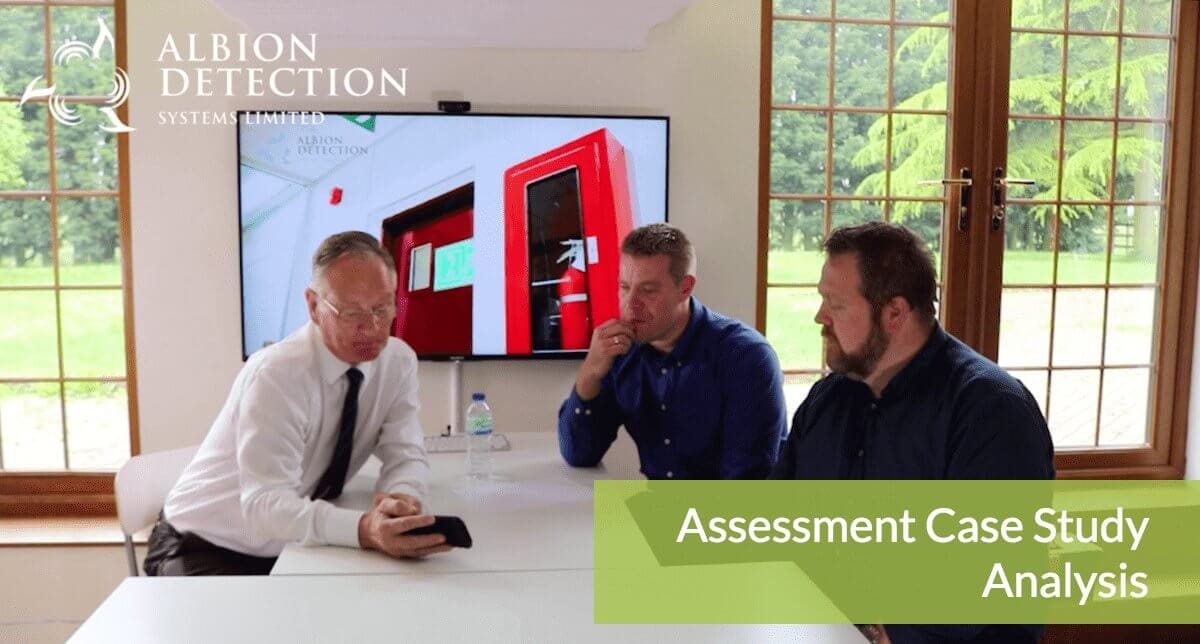
Introduction to the Fire Risk Assessment Case Study Analysis
Why Do A Fire Risk Assessments for HMO?
The main reason for undertaking a fire risk assessment for your HMO property is that it is legally required.
All landlords have a legal duty to ensure that any property they rent out is as safe as possible from fire.
For HMO landlords, a fire assessment is a legal obligation.
Likewise, failing to carry out a specialist fire safety risk assessment means you’re negligent in your HMO fire safety responsibilities – a fact which can have serious legal repercussions.
Failing to carry out a risk assessment will not only land you in legal hot water ahead of a fire event.
If the worst should happen and a fire breaks out, the legal ramifications could be even worse, along with the added risk of a loss or danger to life.
By conducting a fire risk assessment, you are making sure that the risks of fire are as low as possible and the danger to residential tenants is minimised.
What you are also doing is ensuring that your valuable property is as well-protected as it possibly can be.
A small amount of work conducting a fire risk assessment now offsets much bigger problems and costs in the future, as well as helping to alleviate troublesome occurrences such as false fire alarms – something which can cause considerable inconvenience in a HMO.
Fire Risk Assessments for HMO – What It Entails
A fire risk assessment should be a careful examination of the HMO property, and also should consider the activities of tenants – cooking, for example – and the degree of probability that a fire may start in a given area.
In general, the goals of a fire risk assessment are actually quite simple:
- Identify fire hazards
- Ensure the risk of identified hazards to cause harm is as low as possible
- Use this information to decide on the best fire precautions and HMO fire evacuation procedures to safeguard tenants in the event of a fire
The government provides a detailed resource on undertaking fire risk assessments in a HMO setting – paying specific attention to those common areas we mentioned.
Organisations like firesafe.org also provide detailed resources around the requirements of landlords to undertake fire risk assessments.
Fire Risk Assessments for HMO – The Legislation
When it comes to HMOs, fire safety legislation is actually pulled from two different places, which can be confusing for some.
The Housing Act 2004 was introduced by the government to push out their ‘Housing Health’ and ‘Safety Rating System’, and it covers some of the regulations you will need to abide by as a landlord of a HMO.
Alongside this is the Fire Safety Order 2005.
This piece of legislation lays out the responsibilities of the ‘responsible person’ (which is usually the landlord) in conducting and maintaining fire risk assessments.
There is an easy to follow Fire Safety Order guide, which makes the process that much simpler.
Fire Risk Assessments for HMO – What Happens Next?
Once the fire risk assessment is complete, you have the knowledge to start building on your findings.
The first step is to make a clear record of any hazards you did find and spell out how you plan to reduce the risk of these hazards to tenants.
It is important to write this down and keep it safe; it shows you have conducted a risk assessment and have seen any potential hazards, which is important in the case of an actual fire.
Next, you need to create a plan in case of a fire-related emergency – covering all potentialities and possible fire sources – and, again, keep this safe in your permanent records.
Authorities such as the fire service or council may ask to see this document, so it’s obvious why it’s so important to retain these records.
Once you have an emergency plan, you need to let tenants know about it and what the plan entails.
The best way to do this is usually with a tenancy agreement, but you can also place notices in common areas to ensure all tenants are aware of what to do in the case of a fire.
Fire Risk Assessments for HMO – Review and Bring Up-To-Date
Once you have completed a fire risk assessment and put an emergency plan in place, this doesn’t mean the exercise is finished.
It is important to regularly review the circumstances of the HMO and bring the assessment and plan up to date to reflect increased or reduced risks.
Not only is this a mandatory practice, it also shows that you are invested in the safety of your tenants and HMO building and have worked to mitigate hazards that were present.
If you feel like you need help undertaking and completing a fire risk assessment, then consider appointing an exterior risk assessor such as Albion to do this for you.
This can give you peace of mind, knowing that an expert has combed over your HMO property and made their suggestions.
And, at the same time, you know your tenants are safe and have the very best guidance in place in the case of a fire-related emergency.



